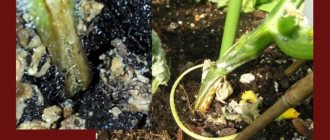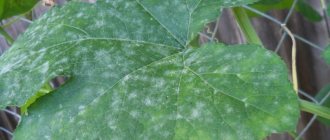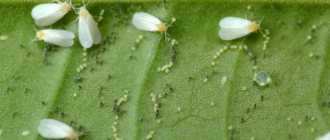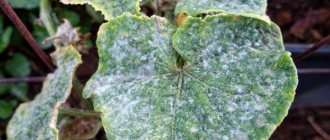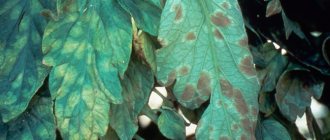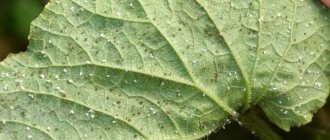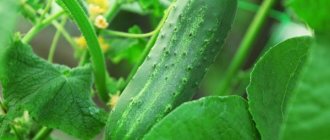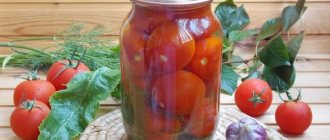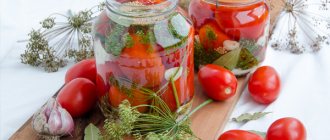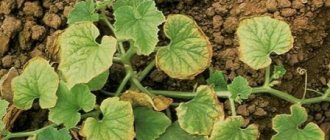White plaque on cucumbers - what is it?
This coating has different origins depending on the preparation technology and the composition of the workpiece.
How is it formed
When cucumbers are properly prepared, plaque is safe for health and appears as a result of the activity of lactic acid bacteria . It is formed if vinegar was not added to the preparation, the vegetables were completely covered with brine and were not in contact with air.
A white coating caused by yeast or other harmful bacteria is dangerous. This mold can cause poisoning. If the fruits are infected with the Clostridium botulinum bacterium, their consumption will lead to a serious illness - botulism.
Moldy salted vegetables are identified not only by a white coating, but also by other signs:
- unpleasant odor;
- softness of the fruit.
Plaque on pickled and lightly salted cucumbers occurs due to mold damage. Lactic acid is formed only in salted vegetables.
Moldy workpieces are disposed of. It is useless to try to wash off the fungus: the vegetables are affected not only from the outside, but also from the inside.
Important! Before salting, vegetables are carefully sorted and washed with running water. One spoiled fruit threatens to spoil the entire contents of the jar.
Causes of brine cloudiness
The brine becomes cloudy for a reason. This indicates a violation of the cooking process. There can be many reasons:
- Dirt. Each fruit, spices and jars must be thoroughly washed. A poorly washed product or the container itself causes the development of putrefactive processes.
- Improper sterilization. The jar is ready for use only when drops of evaporation appear on its bottom.
- Sea or iodized salt. These salts contain components that promote turbidity.
- Violation of the tightness of the container. Which is a consequence of poor-quality lids and chips on the neck. In addition, the lids must be rolled up especially tightly so that not a single microorganism can penetrate the container.
- Not a quality preserved product. Presence of chemicals and harmful substances.
- Wrong recipe. For example, the absence of vinegar or acid.
- Improper storage of the product. It should be carried out in rooms with a temperature of no more than 7 degrees.
If there were no violations in preparation, then the cucumbers are not in danger and can be consumed for several years.
Each case of white brine is individual and if there is the slightest suspicion about the quality of the product, then it is better to throw everything in the trash.
Causes
White coating on pickled cucumbers occurs for the following reasons:
- natural fermentation process;
- damage by putrefactive bacteria, yeast due to improper preparation of the product or storage.
In the bank
Irregularities in preparation lead to molding of cucumbers in a jar:
- improper sterilization of glass containers and lids;
- lack of brine, in which it does not completely cover the cucumbers;
- poorly washed vegetables;
- unsuitable ingredients or incorrect recipe;
- air entering the can;
- use of varieties grown only for fresh consumption.
Another reason is non-compliance with the storage conditions of the workpieces.
In a barrel
On barrel pickled cucumbers, plaque forms due to:
- non-compliance with the recipe;
- insufficient amount of brine;
- storage without oppression or in unsuitable conditions;
- sharp temperature fluctuations.
Why did a white coating appear on the cucumbers in the jar?
The white coating on pickles and the bottom of the jar is formed due to the growth of lactic acid bacteria during the fermentation process. If the conservation process was followed correctly, then this is normal. Such cucumbers can be consumed without risk to health. The only thing is that they need to be washed before use.
However, you should not confuse pickled, lightly salted cucumbers with pickled ones. If a product is prepared by pickling, then the formation of a white coating indicates that such a product is unsuitable for food. It needs to be disposed of.
Did you know? Preservation as a method of prolonging the preservation of food suitable for human consumption was invented by the French culinary specialist Nicolas Appert in 1809. His invention replaced the usual methods of long-term storage of food in those years - salting and drying.
Pickled cucumbers that are covered with plaque, if they have become soft and have an unpleasant odor, must also be disposed of. Yeast or other harmful bacteria have penetrated into such a product; it should not be eaten, as this can cause poisoning or cause other harm to health.
Is it possible to eat these cucumbers?
The safety of vegetables with a white coating depends on the nature of its origin.
Is raid dangerous?
The formation of a layer of lactic acid when salting rules are followed is a natural phenomenon caused by fermentation. The fermented product is good for health: natural probiotics inhibit the development of intestinal pathogenic microflora.
Such bacteria have a number of valuable properties:
- establish normal bowel function;
- stimulate the secretion of gastric juice;
- prevent constipation and diarrhea;
- help strengthen the immune system;
- increase the resistance of the intestinal mucosa to various irritants;
- reduce the risk of developing an allergic reaction.
White coating on vegetables caused by improper preparation or storage of the product is hazardous to health.
Important! A swollen jar lid is another sign of a damaged product.
When eating cucumbers with a layer of mold, pathogenic microorganisms enter the body, which causes poisoning or botulism.
When can cucumbers be saved?
To get rid of the layer of lactic acid, the vegetables are washed under running water, placed in a clean glass container and filled with newly prepared brine. This will extend the shelf life of the product.
Reference! If cucumbers are stored in a barrel, it is enough to remove the top row.
In an already opened jar, the fruits are poured with fresh brine with the addition of mustard powder or mustard seeds. This will not only protect against mold formation, but will also make the cucumbers crispier. Instead of mustard, horseradish root is suitable, which is placed in a jar. The contents of the container are covered with horseradish leaves.
When should a product be thrown away?
Pickles affected by mold, with cloudy and unpleasant-smelling brine and soft fruits that fall apart in the hands, are disposed of.
When purchasing a product in a store, pay attention to the production date and shelf life. An expired product is unfit for consumption.
How to save pickled cucumbers if a white coating appears on them
If you find a white coating on pickled cucumbers, you should not immediately regret the spoiled product. First you need to determine the nature of this plaque, that is, find out whether it is mold or lactic acid.
The formation of lactic acid during salting is a completely normal process. If you plan to store the cucumbers in brine for some time, it is recommended to rinse them under running water, put them in a clean jar and fill them with fresh brine. If homemade pickling is stored in a large container (barrel), then you can limit yourself to washing only the top row of cucumbers.
To combat white rot when opening a jar of cucumbers, it is recommended to add mustard powder or mustard seeds to the fresh brine. This prevents plaque formation and makes the cucumbers crispier. The brine may become a little cloudy, but this will not affect the taste of the product. For the same purpose, horseradish root is placed in a jar, and the top is covered with horseradish leaves.
How to pickle correctly
To prevent cucumbers from becoming covered with a white coating, special attention is paid to sterilizing the jar with a lid and selecting unspoiled fruits.
Sterilization of jars and lids
To prevent canned food from spoiling during storage and vegetables becoming covered with a white coating, it is important to properly sterilize the containers.
They do this with:
- pair;
- boiling;
- electric furnaces;
- microwaves;
- potassium permanganate.
The jars and lids are first checked for integrity. Containers must be free of chips and lids must not be deformed.
Important! The containers are thoroughly washed with baking soda or laundry soap.
For steam sterilization, take a pan of boiling water and a special grid for jars, which is installed above the pan. The container is placed in the device with the neck down and held until large drops of moisture appear. Seaming lids are placed in boiling water. Place vegetables in the jar only after it is completely dry.
When boiling, the container is placed in a large container so that cold water completely covers it. The liquid is heated gradually so that the jars do not burst due to a sudden temperature change. Sterilize the vessels 5 minutes after the water boils.
Several cans are placed in the oven (electric oven) at the same time. They are placed with the neck down for 12 minutes at a temperature of +120°C.
One three-liter jar or several half-liter jars are sterilized in a microwave oven. A small amount of water (1.5–2 cm) is poured into each. The power is set at 800 kW. Sterilization lasts 3 minutes.
In a simpler version, clean glass containers are rinsed with a pink solution of potassium permanganate to disinfect the inside.
Storage
Optimal conditions for workpieces: temperature - no higher than +4°C, air humidity - 80–90%. The cellar is good.
Reference! Pickles are also stored in tightly closed jars in the apartment.
Vegetables removed from the jar of brine are kept in the freezer. Excess moisture is first removed and the fruits are packaged in small portions in plastic bags. Such cucumbers are subjected to heat treatment before consumption. They are used for pickle soup and pizza.
To increase shelf life, barrel fruits are stored in the basement. The ideal temperature regime for them is 0...-1°C.
Storage nuances:
- pour enough brine so that it completely covers the fruit;
- cucumbers are kept under pressure;
- do not allow temperature changes in the room.
Useful tips
Your rolls will certainly turn out to be tasty and healthy if you use the following recommendations for their preparation and storage:
- For pickling, you should choose fruits with black pimples.
- Those cucumbers that were picked from the garden in the morning are better suited.
- Before salting, the greens should be sorted out, discarding those that are damaged, with traces of rot, or with spots on the skin. If these get into the jar, the entire seaming will be ruined.
- For preservation, fruits should be sorted by size. It is best to opt for small, thin-skinned ones.
- Before preservation, fruits must be thoroughly washed and dried.
- If a day has passed since the greens were collected from the garden, then they need to be soaked in water for 3-4 hours to return the required percentage of moisture content to them.
- It is necessary to add no more than 6% of the total spices to the pickle.
- Storing pickles should be done in a place with a cool temperature, in the absence of humidity and sunlight -
in a basement, cellar, pantry. - Cucumbers prepared using the cold pickling method should only be stored in the refrigerator.
- The salting process lasts for about a month. You should not use the rolled product before.
So, a white coating on pickled cucumbers, including after cold salting, while they retain their density and pleasant smell, is the norm.
Did you know? Some peoples eat cucumber as a dessert. It is served on the sweet table along with fruits, berries and sweets.
Pickled and lightly salted product with plaque must be disposed of. You can avoid this problem by strictly adhering to the rules of preservation, carefully sterilizing containers and lids, selecting high-quality fruits and sealing the jars well.
Useful tips
To prevent moldy vegetables, follow some subtleties:
- not only mustard powder is poured into the jar, but mustard plaster is also dipped into it;
- Black peppercorns are added to the brine.
At temperatures above +1°C, the development of bacteria accelerates, and the fruits themselves deteriorate faster.
To extend the shelf life of barrel cucumbers in an apartment, they are washed, dried, placed in a food container, sprinkling each layer with mustard powder.
Is it possible to eat cloudy cucumbers? Let's try to rehabilitate conservation
What to do if the cucumbers become cloudy and the lids are swollen? Almost every housewife has encountered such an unpleasant phenomenon. If you notice that the lids have acquired convex shapes, then such preservation should most likely be disposed of. Nothing will help her - only the trash heap. Do not delay the process of destroying such cans, otherwise an orchestra of exploding tin lids will begin to play in your basement or cellar. And it will take a long time to get rid of the unpleasant musty smell of spoiled brine.
But there are situations when canned cucumbers can be given a second life. Let's find out what to do if the cucumbers become cloudy in the jar. Let's simulate several situations:
- If you notice that the cucumber pickle has become cloudy literally 2-3 days after preservation, then this is the most favorable situation. The brine needs to be drained, the cucumbers should be washed thoroughly, preferably with boiling water, and then rolled back into jars. Yes, don't forget to check all the ingredients in the recipe and add vinegar this time.
- Cloudiness of cucumber brine is the result of lactic acid fermentation. You can resort to the following trick. Place the jar of pickled cucumbers in the refrigerator for 7-10 days. Conduct a so-called experiment and do not forget to record your observations every day. In some cases, all the turbidity will settle at the bottom of the jar, and the brine will again become crystal clear, like God's dew.
- You can prepare a new brine. In this case, repeat the preservation procedure from A to Z. Do not forget to scald the cucumbers with boiling water. This can be done directly at the bank.
If the cucumber pickle cannot be restored to its original appearance, try to dispose of such preservation, because its cloudiness may be due to the growth of bacteria. Some housewives resort to this trick: they wash canned cucumbers with boiling water and then add them to the pickle. After heat treatment, not a single microbe or bacteria will survive.
When can cucumbers be saved?
Before you throw away your pickles, you should first find out if they can be saved.
How to determine the suitability of cucumbers for consumption
Workpieces that retain the following characteristics remain suitable::
- little mold;
- cucumbers are strong, elastic, not soft;
- The smell of brine is natural, not putrid.
In this case, after some actions, you can continue storage.
What to do with these cucumbers
The mold is removed, the vegetables are washed from plaque, placed in a clean, sterilized jar and filled with new brine. After this, put it in a cool place.
Delicious recipe! How to make homemade chips in the microwave
If cucumbers are stored in a barrel or other large container (pan, bucket), you can rinse or throw away only those that were in the top layer. Then add fresh brine and add mustard powder.
It is not recommended to store such preparations for a long time ; it is better to process them as soon as possible, using them for preparing hot dishes (pickle soup, pizza).
What is white plaque and why is it dangerous?
Basically, the white coating on canned green fruits is lactic acid bacteria (naturally occurring probiotics). They inhibit the development of pathogenic flora in the intestines and are necessary for the human body to improve the functioning of the gastrointestinal tract. Probiotics help:
- stimulation of gastric juice secretion;
- eliminate the causes of constipation and diarrhea;
- strengthen the immune system;
- increase the resistance of the intestinal mucosa to various irritants;
- reduce the level of allergic reactions.
Also, a white coating may indicate spoilage of the product. Namely, like the turbidity of the brine, it can be an indicator of a violation of the preservation technology (air entering the container, lack of brine). In this case, you will notice an unpleasant odor and possibly swelling of the lid.
Along with a spoiled canned food, not beneficial microorganisms enter the body, but aggressive bacteria and putrefactive yeast fungi.
In addition to poisoning, the main harm and danger to humans is caused by cloudy brine and white coating if canned cucumbers contain helminthic fungi. This process can cause a disease such as botulism. This is facilitated by botulinum toxin, which often occurs under anaerobic conditions (without air).
Inattention and a frivolous attitude towards preserving cucumbers can lead to disappointing results. Compliance with the basic rules of preparation will give you the opportunity to eat crispy, tasty and hearty fruits during the cold season.
After a lot of effort has been spent on preserving cucumbers, it is very unpleasant to see them turn white before adding them to the New Year's salad. What is this white coating on cucumbers in a jar and can they be eaten?
Features of storing pickled cucumbers
After you have made the twists and checked for leaks, turn them over and place them on the lid for a more complete fit. To increase the heat treatment time, the preservation is wrapped and left to cool gradually. After a day or two, the workpieces should be placed in a cool, dark place. The ideal option is a cellar.
There are several effective folk methods for extending the “life” of conservation, guaranteeing the absence of mold.
They say that mold will not appear if you add:
- Mustard powder. Place mustard plaster under the lid (you can place mustard powder in a piece of fabric) and close.
- Black peppercorns. Place the pepper in the bag in the brine.
- Adding a teaspoon of mustard powder or peppercorns directly to the brine will also extend the shelf life.
- The optimal temperature for storage is from –1°С to +1°С. The higher the temperature, the faster bacteria develop and the cucumbers become unusable.
Rules for storing pickled cucumbers in a jar
To avoid the formation of a white coating, it is important to follow all the storage rules for preservation. The optimal place is the cellar; you can leave jars of pickled vegetables in the refrigerator. The best conditions are considered to be temperatures up to +4 degrees and humidity of approximately 80%.
It is allowed to store pickles in an apartment, but the lids must be tightly closed to prevent air from entering. Vegetables that have been prepared using the cold pickling method can only be stored in the refrigerator. Otherwise, the product will quickly become moldy and unfit for consumption.
Pickles that have been removed from the container can be stored in the freezer. They do not lose their taste; they can be added to various dishes that require heat treatment.
It is better to store cucumbers in barrels in basements, where the temperature is approximately 0 degrees. In this case, it is important that the vegetable is completely covered with brine, there is good pressure, and the temperature in the room constantly remains at the same level. The pickling process lasts about a month; it is better not to consume the products ahead of time.
The easiest way to preserve products is to properly prepare them. Cucumbers need to be thoroughly washed and sorted. For preservation, it is recommended to use strong and healthy cucumbers. The best are those that were collected in the morning and have black pimples.
Attention! Properly prepared containers are also the key to success, so it is important to follow the entire cooking sequence.
A white coating on cucumbers does not always indicate that the product is hopelessly spoiled. In some cases, the formation of such a substance is a natural process and does not require destruction of the conservation product. However, it is worth remembering that the appearance of plaque on pickled cucumbers is almost always a sign of spoiled food that should be gotten rid of.
How to properly sterilize jars and lids before screwing
Improper sterilization leads to spoiled workpieces.
All components and ingredients must be clean so that microorganisms do not get into the preparation for the winter:
- Check jars and lids for chips and scratches.
- Prepare all ingredients thoroughly.
- Sterilization time depends on the size of the container: 1–2 liter jars are exposed to steam for 10–15 minutes. A three-liter bottle takes 20–25 minutes.
- Allow sterilized jars and lids to dry.
